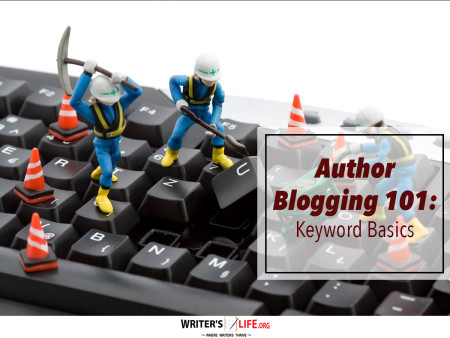- How To Tackle Jealousy In Creative Writing
- Common Submission Mistakes
- How To Stop Your Blog Becoming Boring
- The One Thing Every Successful Writer Has In Common
- How To Make Yourself Aware Of Publishing Scams
- Why Almost ALL Writers Make These Grammar Mistakes At Some Point
- 5 Tips For Authors On How To Deal With Rejection
- Top Mistakes to Avoid When Writing a Novel
- How to Avoid Common New Writer Mistakes
- 10 Mistakes New Fiction Writers Make
10 Structure Tweaks to Fix a Slow Second Act

Second Act Structure can often be the trickiest part of narrative construction, leaving even seasoned writers flustered and characters stranded in a murky middle. You're not alone if you've found yourself staring at a blank page wondering how to revive momentum and purpose in the heart of your story. But fear not, because we're diving into 10 actionable tweaks that can transform your slow-moving Second Act into a gripping and dynamic centerpiece.
Embrace the Unexpected in Revamping Second Acts
Let's face it—surprises add spice to life and storytelling alike. When revamping your second acts, introducing a fresh twist can serve as an adrenaline shot to your narrative. Consider what unexpected event could turn your protagonist's world upside down. Could a ghost from the past reemerge, or might a secret finally come to light? A well-placed surprise not only rejuvenates your plot but keeps readers hooked for what's to come.
Delve deeper: How does this surprise affect character dynamics? If you follow the ripples through, you'll find an array of opportunities for heightened tension and renewed character motivation. It could be just the thing to banish sluggishness and inject excitement.
Strengthening Relationships in the Structure for Act Two
Humans are social creatures, and relationships—be it burgeoning friendships, rivalries, or romances—drive the heart of our stories. Improving act structure by developing these connections can pull readers deeper into your tale. Rich interactions provide depth and a personal touch that resonates on a human level.
As you overhaul your structure for Act Two, examine the arcs of these relationships. Are they evolving in plausible, intriguing ways? Offer characters choices that test loyalties, unearth new dynamics, and propel the story forward. Relationships should feel authentic, mirroring the complex webs we weave in reality.
Introducing Secondary Conflicts to Overcome Second Act Challenges
When the primary narrative feels stagnant, secondary conflicts can be your best friends. These conflicts create additional stakes and complexity, compelling characters to react in new and unexpected ways. This technique effectively lifts sagging narrative stretches and revitalizes the reader's engagement with overcoming second act challenges.
Your secondary plotlines can be personal struggles unrelated to the primary conflict, involving the protagonist's internal demons, or they might be complications in external relationships. These layers add texture to your storytelling quilt, making for a more absorbing read.
Using Timelines as an Effective Second Act Adjustments Tool
When it comes to improving act structure, timelines aren't just for plotting out what happens next—they're powerful tools that can combat the dreaded 'slow middle.' Implementing a ticking clock or deadline within your story can infuse urgency into your second act.
Whether it's a literal clock winding down or an emotional deadline (like needing to resolve inner turmoil before an important family event), these timelines offer compelling stakes that enhance narrative velocity. Consider what events can be tied to such a deadline and explore how they impact your character's decision-making.
Using Backstory Strategically in Fixing Second Act Issues
While dumping backstory all at once is akin to hitting pause on your narrative, weaving it thoughtfully into your second act can engage readers further. Fixing second act issues often involves revealing intriguing flashes of the past at moments that enrich the current plotline.
Think of these backstory slices as pieces of a jigsaw, gradually showing why characters act the way they do or what motivates their journey. Keep it brief, relevant, and always connected to the immediate stakes of your narrative journey.
Leveraging Subtext in the Second Act Narrative Tweaks
Dialogue and action that bubble with unspoken tensions can transform a lukewarm second act into a cauldron of intrigue. Second act narrative tweaks using subtext can bring layers and nuances that make even mundane scenes deeply riveting.
Craft conversations and scenes where what's left unsaid speaks louder than the words themselves. Use gestures, pauses, and double meanings—these tiny details can illuminate the unsaid desires, fears, and secrets of your characters, engaging readers who love digging below the surface.
Creating an Emotional Chart for Second Act Story Tricks
Tracking your characters' emotional journeys can offer exceptional insight into maintaining momentum. An emotional chart serves as a second act story trick to evaluate if your plot offers rich emotional variation, or if it's stuck in emotional limbo.
If you notice long stretches of similar emotional beats, brainstorm how to introduce upheaval, contrast, or catharsis. Balance quiet moments with high tension, and ensure your protagonist evolves emotionally with each event.
Establishing Nods to the End in Second Act Performance Boost
As you improve your act structure, planting hints toward your climax and resolution can keep audiences engaged. These 'nods to the end' don't just foreshadow what's to come but offer moments of 'aha' for attentive readers.
Lay subtle clues related to character motivations, relationships, or world-building details, enticing readers to connect these threads as they progress. This technique results in a second act performance boost, enriching the narrative's layered complexity and viewer satisfaction.
Building Parallel Plots for Renewing Act Two Structure
Parallel plots running alongside your main story can recharge a sluggish middle act. Think of these as narrative double-acts that lift the core using fresh perspectives or different character vantage points.
These parallel plots for renewing act two structure shouldn't distract but complement the central narrative, interweaving and affecting one another. Alternate between these plots to sustain reader curiosity and prevent narrative monotony.
Want to promote your book after it’s published? Check out our Book Marketing Articles. According to Wikipedia, the second act often contains significant plot points that complicate the protagonist's journey.
Frequently Asked Questions About Second Act Structure
Q: How can secondary characters help in a slow second act?
A: Secondary characters offer fresh perspectives and conflicts that can stir new interest and complications within the plot.
Q: What's a sign of a sluggish second act?
A: A second act might be sluggish if scenes feel repetitive, stakes drop, or the plot seems directionless or too predictable.
If you're serious about growing your author career, don't miss out on these free tools and templates built specifically for writers. Access all 7 free resources here.



























